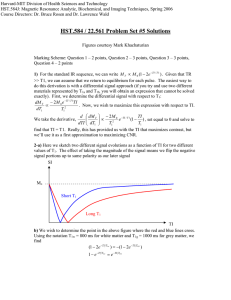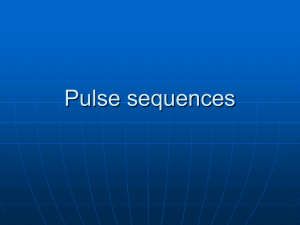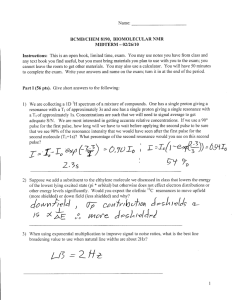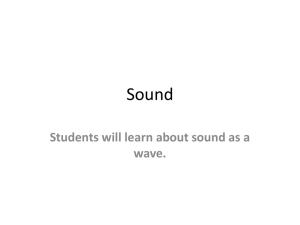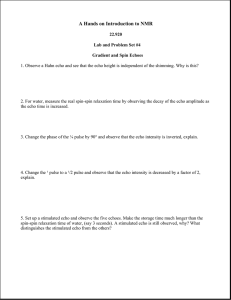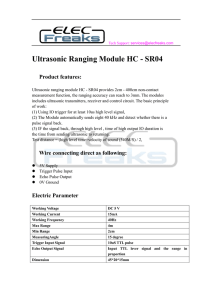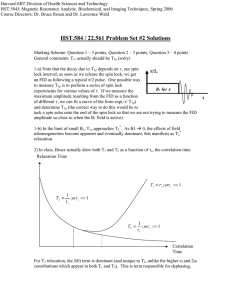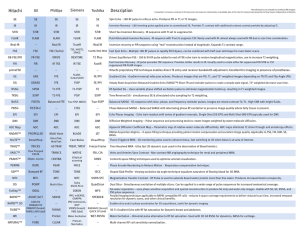Harvard-MIT Division of Health Sciences and Technology
advertisement
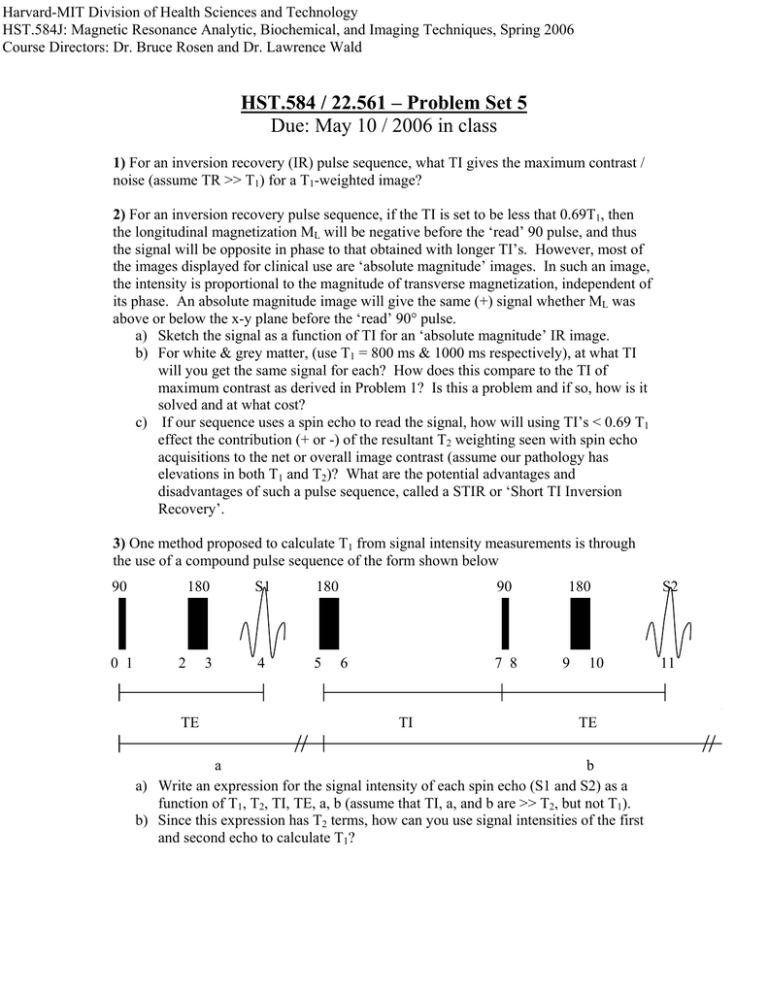
Harvard-MIT Division of Health Sciences and Technology HST.584J: Magnetic Resonance Analytic, Biochemical, and Imaging Techniques, Spring 2006 Course Directors: Dr. Bruce Rosen and Dr. Lawrence Wald HST.584 / 22.561 – Problem Set 5 Due: May 10 / 2006 in class 1) For an inversion recovery (IR) pulse sequence, what TI gives the maximum contrast / noise (assume TR >> T1) for a T1-weighted image? 2) For an inversion recovery pulse sequence, if the TI is set to be less that 0.69T1, then the longitudinal magnetization ML will be negative before the ‘read’ 90 pulse, and thus the signal will be opposite in phase to that obtained with longer TI’s. However, most of the images displayed for clinical use are ‘absolute magnitude’ images. In such an image, the intensity is proportional to the magnitude of transverse magnetization, independent of its phase. An absolute magnitude image will give the same (+) signal whether ML was above or below the x-y plane before the ‘read’ 90° pulse. a) Sketch the signal as a function of TI for an ‘absolute magnitude’ IR image. b) For white & grey matter, (use T1 = 800 ms & 1000 ms respectively), at what TI will you get the same signal for each? How does this compare to the TI of maximum contrast as derived in Problem 1? Is this a problem and if so, how is it solved and at what cost? c) If our sequence uses a spin echo to read the signal, how will using TI’s < 0.69 T1 effect the contribution (+ or -) of the resultant T2 weighting seen with spin echo acquisitions to the net or overall image contrast (assume our pathology has elevations in both T1 and T2)? What are the potential advantages and disadvantages of such a pulse sequence, called a STIR or ‘Short TI Inversion Recovery’. 3) One method proposed to calculate T1 from signal intensity measurements is through the use of a compound pulse sequence of the form shown below 90 0 1 180 2 TE 3 S1 180 4 5 90 6 7 8 TI 180 9 10 TE a b a) Write an expression for the signal intensity of each spin echo (S1 and S2) as a function of T1, T2, TI, TE, a, b (assume that TI, a, and b are >> T2, but not T1). b) Since this expression has T2 terms, how can you use signal intensities of the first and second echo to calculate T1? S2 11 4) a) Given a rapid train of α degree RF pulses separated in time by TR, and a tissue T1, derive the equilibrium expression for the signal intensity of an FID as a function of α (assume no residual transverse magnetization before the next pulse). Derive an expression for the flip angle needed to maximize this signal for arbitrary TR/T1 (this is the Ernst Angle). b) For a tissue with a T1 of 800 msec, and a TR of 100 msec, how much improvement in signal intensity is achieved by using the Ernst angle relative to using a 90 degree tip? How much is this improved over using a spin echo pulse sequence (90 – 180 – echo) with TE = 20 ms (assume a T2 of 50 ms)? Why is the spin echo less than the 90 – TR – 90 sequence?
